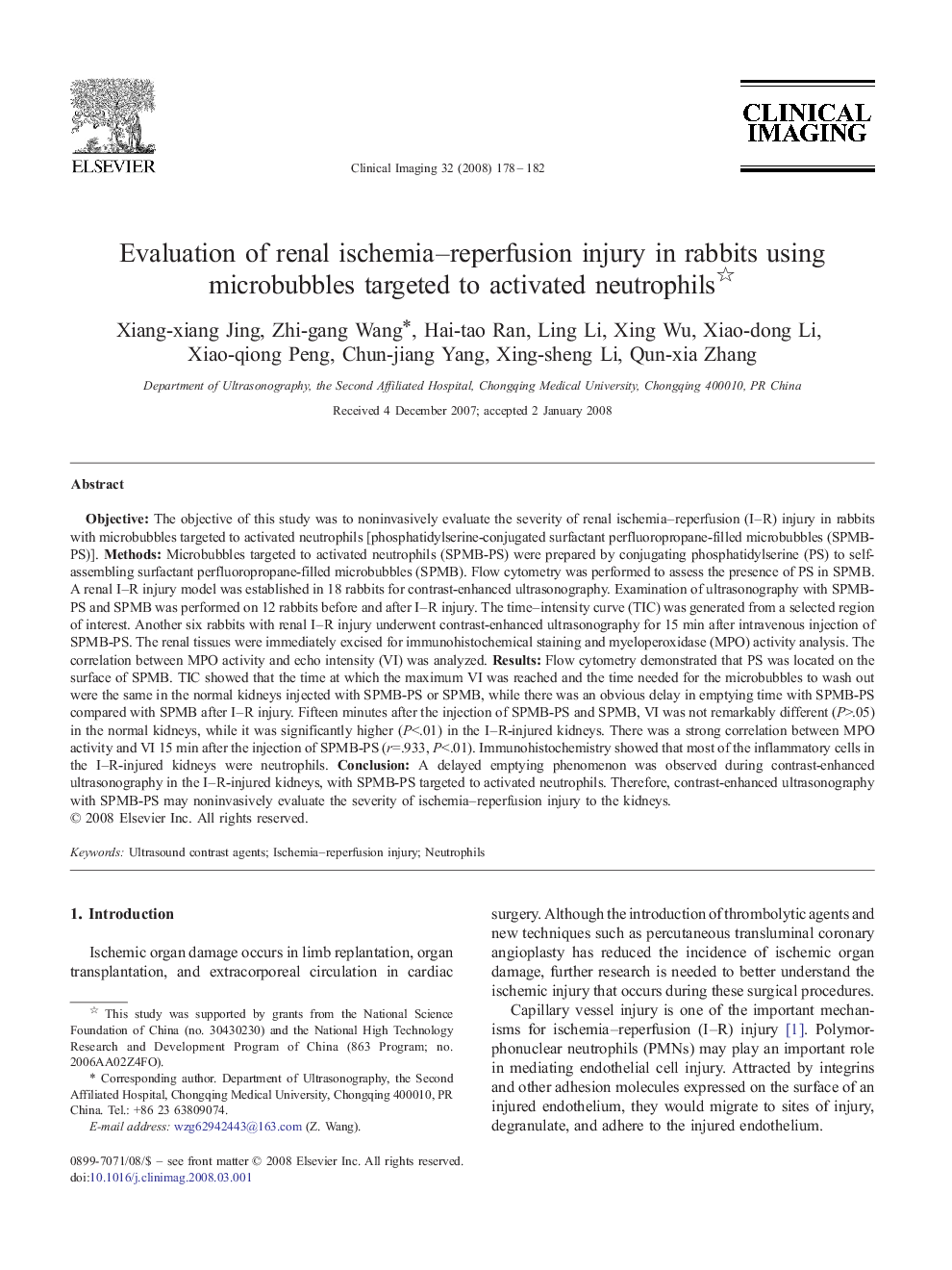| Article ID | Journal | Published Year | Pages | File Type |
|---|---|---|---|---|
| 4222374 | Clinical Imaging | 2008 | 5 Pages |
ObjectiveThe objective of this study was to noninvasively evaluate the severity of renal ischemia–reperfusion (I–R) injury in rabbits with microbubbles targeted to activated neutrophils [phosphatidylserine-conjugated surfactant perfluoropropane-filled microbubbles (SPMB-PS)].MethodsMicrobubbles targeted to activated neutrophils (SPMB-PS) were prepared by conjugating phosphatidylserine (PS) to self-assembling surfactant perfluoropropane-filled microbubbles (SPMB). Flow cytometry was performed to assess the presence of PS in SPMB. A renal I–R injury model was established in 18 rabbits for contrast-enhanced ultrasonography. Examination of ultrasonography with SPMB-PS and SPMB was performed on 12 rabbits before and after I–R injury. The time–intensity curve (TIC) was generated from a selected region of interest. Another six rabbits with renal I–R injury underwent contrast-enhanced ultrasonography for 15 min after intravenous injection of SPMB-PS. The renal tissues were immediately excised for immunohistochemical staining and myeloperoxidase (MPO) activity analysis. The correlation between MPO activity and echo intensity (VI) was analyzed.ResultsFlow cytometry demonstrated that PS was located on the surface of SPMB. TIC showed that the time at which the maximum VI was reached and the time needed for the microbubbles to wash out were the same in the normal kidneys injected with SPMB-PS or SPMB, while there was an obvious delay in emptying time with SPMB-PS compared with SPMB after I–R injury. Fifteen minutes after the injection of SPMB-PS and SPMB, VI was not remarkably different (P>.05) in the normal kidneys, while it was significantly higher (P<.01) in the I–R-injured kidneys. There was a strong correlation between MPO activity and VI 15 min after the injection of SPMB-PS (r=.933, P<.01). Immunohistochemistry showed that most of the inflammatory cells in the I–R-injured kidneys were neutrophils.ConclusionA delayed emptying phenomenon was observed during contrast-enhanced ultrasonography in the I–R-injured kidneys, with SPMB-PS targeted to activated neutrophils. Therefore, contrast-enhanced ultrasonography with SPMB-PS may noninvasively evaluate the severity of ischemia–reperfusion injury to the kidneys.
